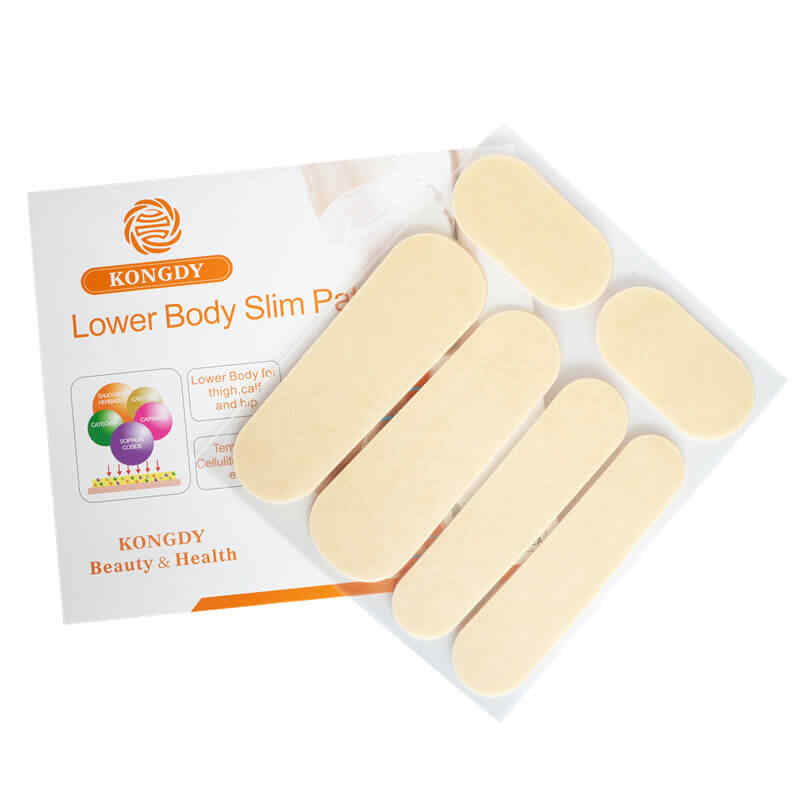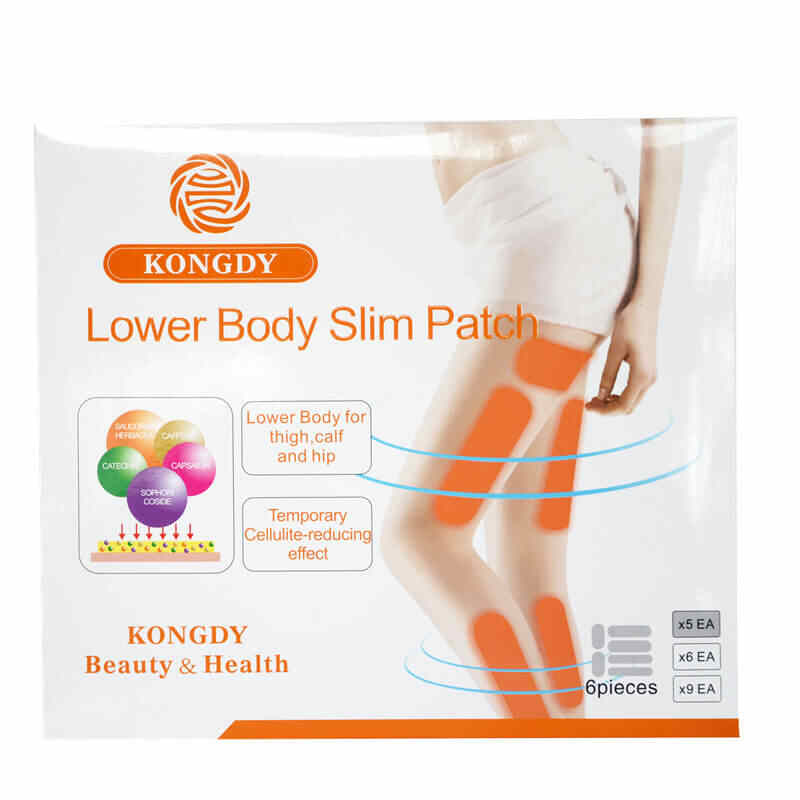Should Small Businesses Consider Custom Transdermal Slimming Patches?
In the ever-expanding weight management industry, transdermal slimming patches have become a popular alternative to traditional supplements and pills. Their ease of use, steady ingredient delivery, and discreet application appeal to health-conscious consumers worldwide. For small businesses aiming to enter or grow within this competitive sector, the question often arises: Should small businesses consider Custom transdermal slimming patches, or is it better to stick with Private Label or OEM options?
The decision is not always straightforward. While Custom transdermal slimming patches offer unique advantages, they also come with challenges that small businesses must carefully evaluate. This article will provide a deep exploration of the topic, analyzing the benefits, risks, and the roles of a transdermal slimming patches Manufacturer, transdermal slimming patches OEM services, and transdermal slimming patches Suppliers in supporting small business success.

1. Understanding Custom Transdermal Slimming Patches
Custom transdermal slimming patches are uniquely formulated and designed slimming patches developed to meet a specific brand’s needs. Unlike Private Label transdermal slimming patches, which are ready-made and pre-formulated, Custom solutions involve:
Creating exclusive formulas with chosen ingredients.
Designing unique patch sizes, shapes, and adhesive strengths.
Developing personalized packaging and branding strategies.
Controlling dosage and release rates tailored to target customers.
These are typically created through collaboration with a transdermal slimming patches Manufacturer that offers OEM (Original Equipment Manufacturing) services.
2. The Appeal of Customization for Small Businesses
2.1 Differentiation in a Crowded Market
Small businesses often face the challenge of competing with larger, established brands. Custom transdermal slimming patches help them stand out by offering unique formulas or features that cannot be easily replicated by competitors.
2.2 Building Brand Identity
For small businesses, branding is everything. A Custom product allows them to align their product’s image with their mission—whether that’s focusing on organic ingredients, premium solutions, or targeting a niche demographic.
2.3 Higher Profit Margins
Since Custom products are unique, small businesses can position them as premium offerings. This supports higher pricing, giving better profit margins compared to selling generic or widely available slimming patches.
2.4 Long-Term Scalability
Custom patches provide a strong foundation for future growth. Once customer loyalty is established, small businesses can expand their product line, reinforce their brand authority, and even consider international markets.
3. Challenges of Custom Transdermal Slimming Patches for Small Businesses
While the benefits are attractive, Custom transdermal slimming patches also pose challenges, especially for smaller companies:
3.1 Higher Initial Costs
Developing Custom patches involves R&D expenses, testing, regulatory approvals, and higher MOQs (minimum order quantities) from a transdermal slimming patches Manufacturer.
3.2 Longer Development Time
Unlike Private Label transdermal slimming patches, which are ready for market within weeks, Custom patches may take 6–12 months to fully develop and launch.
3.3 Market Risk
If the Custom formula doesn’t resonate with customers, the investment may not be recovered easily—posing a greater financial risk for small businesses.
3.4 Limited Supplier Options
Not every transdermal slimming patches Supplier offers full customization. Often, small businesses must work directly with a Manufacturer that provides OEM services.
4. Comparing Private Label, OEM, and Custom Solutions
| Feature | Private Label Transdermal Slimming Patches | OEM Slimming Patches | Custom Transdermal Slimming Patches |
|---|---|---|---|
| Formula | Pre-made, no changes | Semi-customizable | Fully unique |
| Time-to-Market | Fast (weeks) | Moderate (months) | Long (6–12 months) |
| Cost | Low | Medium | High |
| Risk Level | Low | Medium | High upfront, but lower long-term |
| Customization | Branding & packaging only | Partial (formula tweaks) | Full control |
| Best For | Startups & testing markets | Growing small businesses | Established or ambitious small businesses |
For small businesses, Private Label transdermal slimming patches are the fastest and safest way to enter the market, but Custom solutions offer long-term brand strength and differentiation once the business is ready to invest more heavily.
5. The Role of Manufacturers and Suppliers
5.1 Transdermal Slimming Patches Manufacturer
A Manufacturer is the backbone of product development. They provide:
Advanced R&D for Custom patches.
Strict quality control and compliance with GMP, ISO, or FDA standards.
Full OEM services for unique product creation.
For Customization, working directly with a Manufacturer is essential.
5.2 Transdermal Slimming Patches Supplier
Suppliers focus on distribution. They often provide Private Label slimming patches from multiple manufacturers, allowing small businesses to order in smaller quantities. However, they usually lack the ability to support full Custom development.
In short:
Suppliers = ideal for low-MOQ Private Label products.
Manufacturers = necessary for full OEM Custom solutions.
6. When Should a Small Business Choose Custom Slimming Patches?
A small business should consider Custom transdermal slimming patches if:
It already has proven demand with Private Label products.
It has built a customer base that trusts the brand.
It can afford higher investment in R&D and production.
It aims to expand into niche or premium markets.
If the business is still in the testing stage, Private Label transdermal slimming patches from a Supplier may be the smarter starting point.
7. Example Path for a Small Business
Stage 1 – Entry: Work with a transdermal slimming patches Supplier to purchase Private Label patches in small quantities.
Stage 2 – Growth: Once sales grow, collaborate with a Manufacturer under OEM services to make slight adjustments (e.g., packaging or minor ingredient changes).
Stage 3 – Expansion: Transition to fully Custom transdermal slimming patches to secure exclusivity and strengthen brand authority.
This staged approach allows small businesses to minimize risks while building toward long-term success.
8. The Strategic Advantage of Customization
Ultimately, Custom transdermal slimming patches are more than just products—they are a long-term investment in brand differentiation, customer loyalty, and market competitiveness. For small businesses that want to grow beyond basic resale and establish a unique identity, customization is the logical next step.
While the upfront costs and risks are higher, the payoff in terms of exclusivity, pricing power, and scalability makes Custom patches a compelling option for ambitious small businesses.
Conclusion
So, should small businesses consider Custom transdermal slimming patches? The answer is yes—when the timing is right. Private Label is often the best entry point, especially when working with a transdermal slimming patches Supplier that offers flexibility and low MOQs. But once a brand gains traction, Custom patches developed with a transdermal slimming patches Manufacturer under OEM services provide the differentiation, exclusivity, and long-term growth potential needed to thrive in a competitive industry.
Custom solutions are not just about creating a product—they are about creating a brand identity that lasts. For small businesses ready to take the leap, the rewards can be substantial.
Related Questions and Answers
Q1: Are Custom transdermal slimming patches too expensive for small businesses?
A1: They require more investment than Private Label, but the potential for premium pricing and exclusivity often justifies the cost.
Q2: Can a Supplier help with Custom patches?
A2: Typically, no. For full Custom development, small businesses must partner with a transdermal slimming patches Manufacturer offering OEM services.
Q3: Should startups avoid Custom patches?
A3: Startups should usually begin with Private Label transdermal slimming patches to minimize risk, then transition to Custom as demand grows.
Q4: What is the main risk of Custom slimming patches?
A4: The higher upfront cost and longer development time. However, once successful, Custom patches provide long-term advantages.
Q5: How long does it take to launch a Custom patch?
A5: On average, 6–12 months, depending on the complexity of the formula and regulatory approvals.






